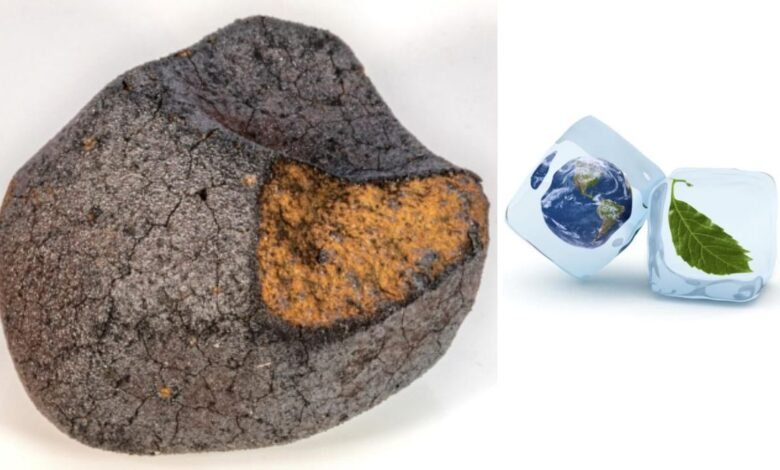Icy Planetesimals: The Icy Secret to Earth’s Water
Discover how icy planetesimals from the outer solar system brought essential water to Earth, making our planet habitable.

Scientists have found that planetesimals, which are tiny, water-rich objects that formed in chilly outer parts of the early solar system distant from Sun, were essential in supplying Earth with water. Life on our planet depends on this water.
Scientists have used age data from certain types of meteorites to learn more about origins of small, water-rich objects in early solar system. These objects, known as planetesimals, constantly provided materials for building planets, including Earth. The original material that made up Earth had very little water.
Earth got most of its water from planetesimals that formed at low temperatures in the outer parts of the solar system.
Ice in these freezing climates was solid water. This was not the case for the smaller bodies nearer the Sun, which were too hot to support ice.
The age data was examined using computer models by researchers, including a Heidelberg University team. These models showed how thermal history of parent bodies affected delivery of water to Earth.
Formation of the Solar System and the Evolution of Earth
Earth and other planets in our solar system originated some 4.5 billion years ago around the Sun. Habitable zone, where liquid water can exist on Earth’s surface, is where planet formed.
Similar to other planets, Earth originated from planetesimals, which are tiny, water-rich objects. These planetesimals were created when a large number of dust particles collided in high-pressure regions spanning thousands of kilometers, eventually collapsing due to gravity alone.
“These tiny bodies provided more than just the raw materials for the planets to form,” says Mario Trieloff, an earth science professor at Heidelberg University. “They are also the source of Earth’s water.”
The Development and Features of Early Planetesimals
The exact conditions under which planetesimals formed in the early solar system, and how long this process lasted, are not yet fully understood. Age data from certain types of meteorites, which broke off from small planets, provide important information.
Scientists from Heidelberg, along with colleagues from Berlin, Bayreuth, and Zurich, used this data to study the thermal evolution and origin of these planetesimals. They found that some planetesimals formed very quickly, in less than two million years. These fast-forming planetesimals heated up so much that they melted and lost all their volatile elements, including water.
How Planetesimals Brought Water to Earth and Its Impact on Extraterrestrial Life
According to study, some planetesimals formed later in outer solar system at cooler temperatures, preserving water trapped in crystals. Scientists believe these smaller bodies continued forming later due to factors that slowed their growth, like collisions between dust clumps that prevented them from becoming planets quickly.
“The Earth collected these small, water-rich planets or their fragments as asteroids or meteorites during its formation. This is why Earth isn’t a dry planet unfriendly to life,” says Dr. Wladimir Neumann, lead author of the study from Heidelberg University, the German Aerospace Center’s Institute of Planetary Research, and TU Berlin’s Institute of Geodesy.
Because planetesimals in other solar systems form under the same physical laws as ours, scientists think there might be Earth-like planets elsewhere in space. If these planets received water from small bodies over time, they might have the right conditions for life to start, according to Professor Trieloff.
- Space Debris Insights from Astroscale and Amazon’s Carbon Emission Trajectory
- SpaceX Falcon 9 Rocket Grounded After Launch Failure: Investigation Underway
- A Dune-inspired spacesuit turns astronaut pee into drinking water
FAQ: Icy Planetesimals – The Icy Secret to Earth’s Water
Q: What are icy planetesimals?
A: Icy planetesimals are small, icy bodies that formed in the outer solar system during its early stages. They are rich in water ice.
Q: What role did icy planetesimals have in the formation of Earth’s water?
A study suggests that there was not much water in the early Earth’s substance. Water, which is necessary for life, was brought to Earth by icy planetesimals from outer space colliding with the planet.
Q: What was the significance of icy planetesimals from the outer solar system?
A: It was too hot for ice to develop on planetesimals close to sun. Earth’s water supply comes from ice planetesimals that formed in the colder outer solar system.



